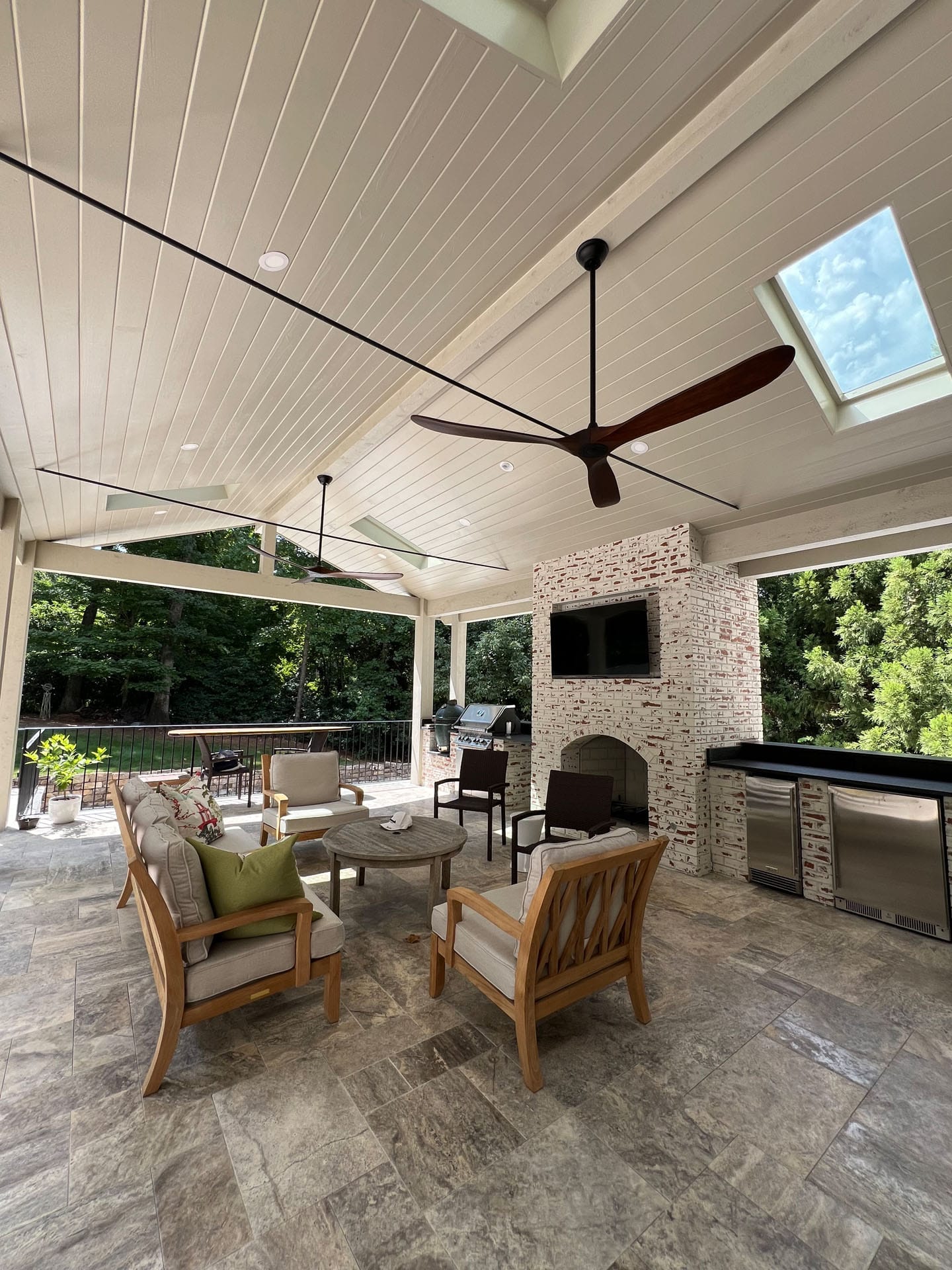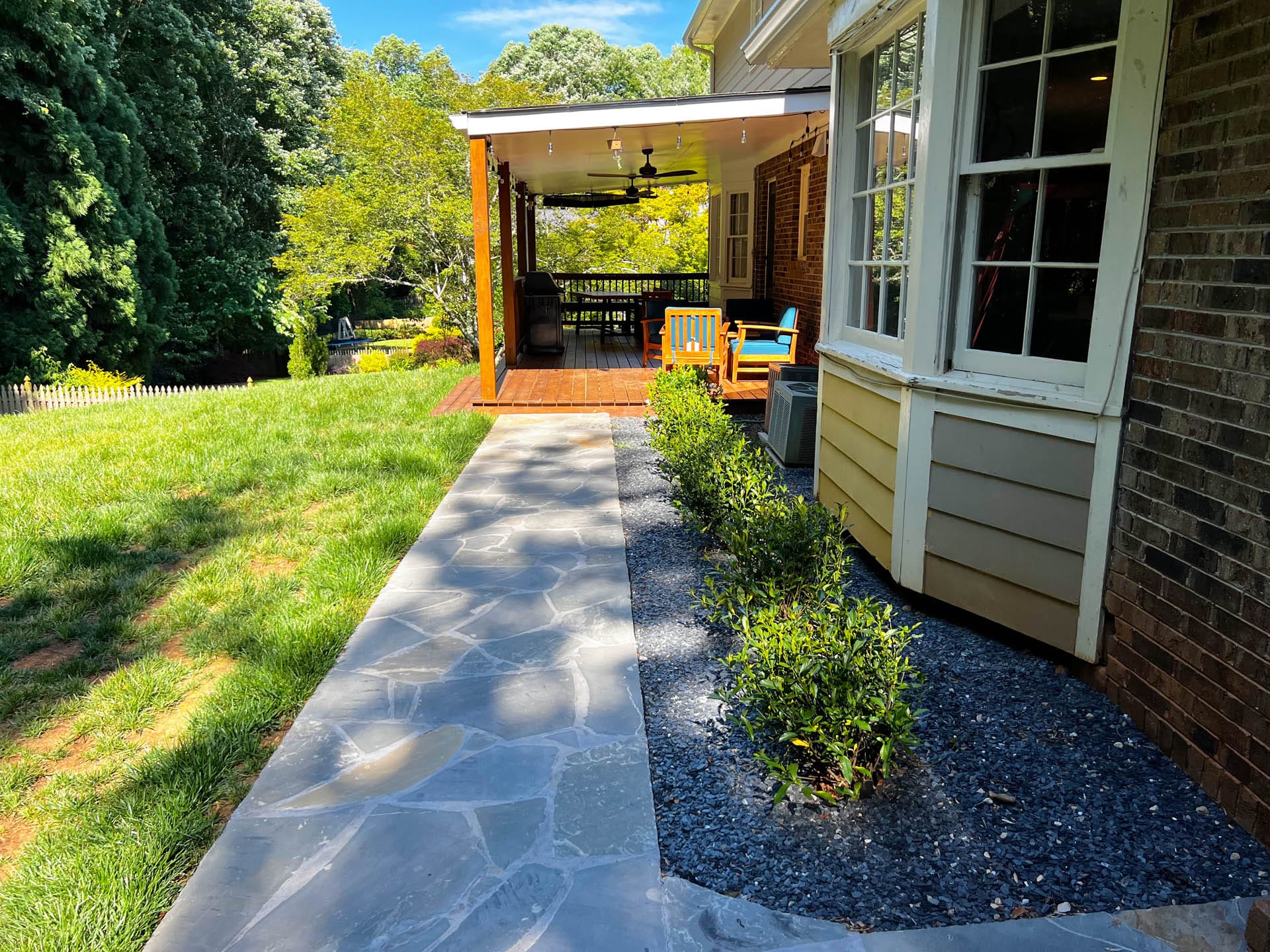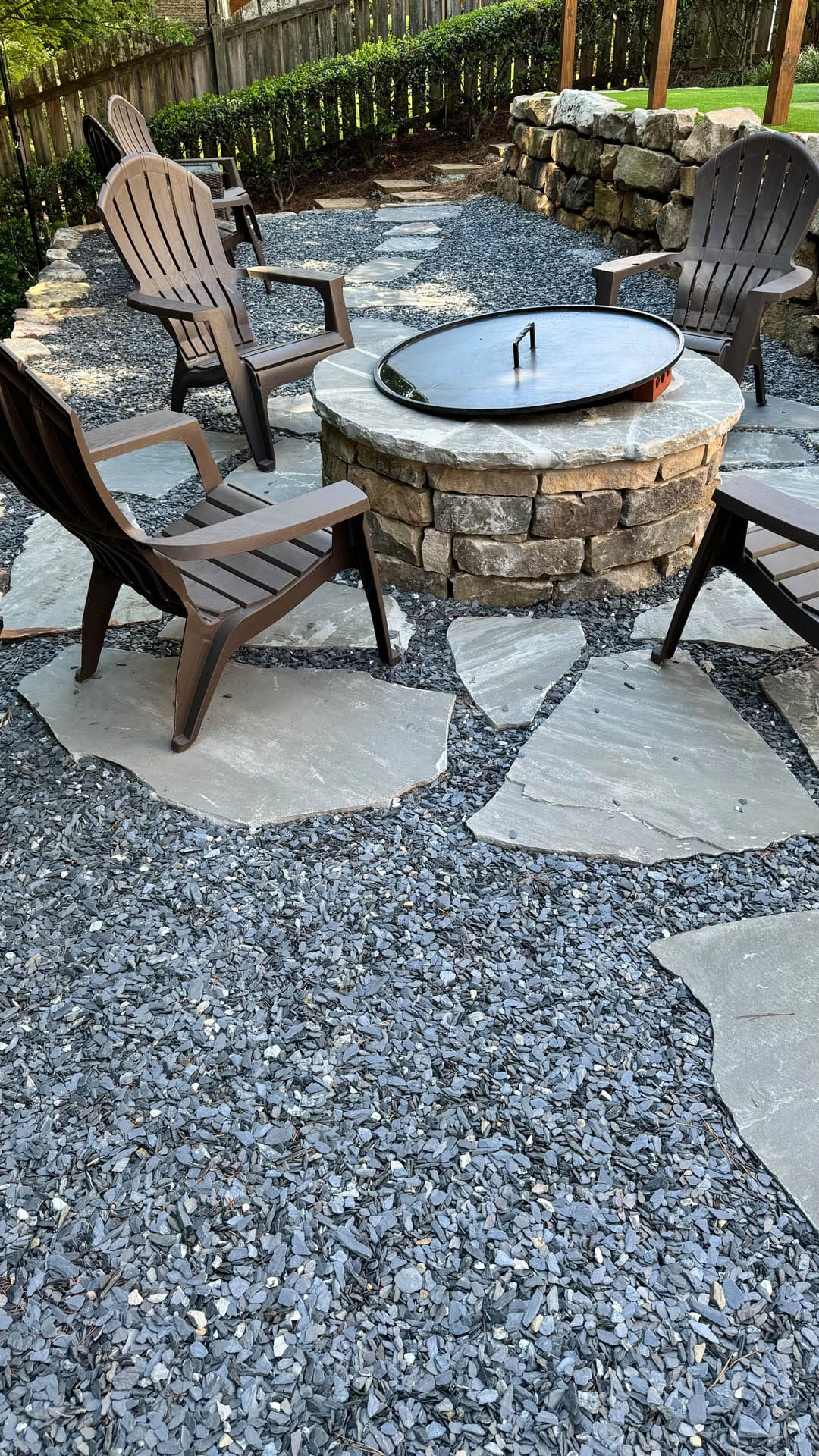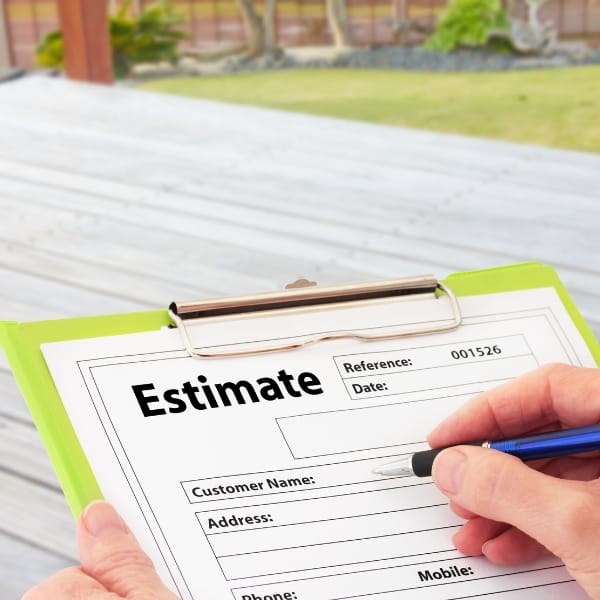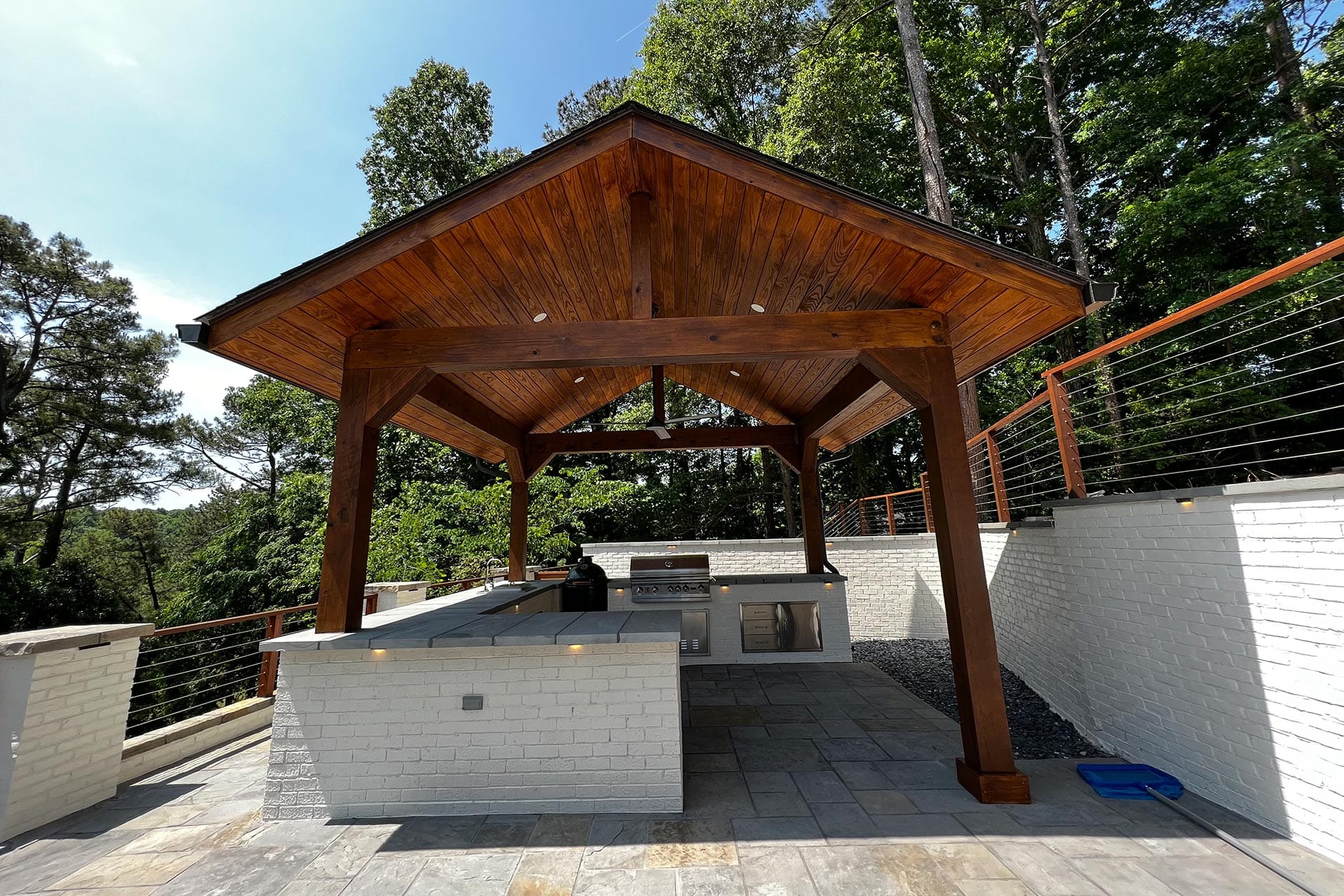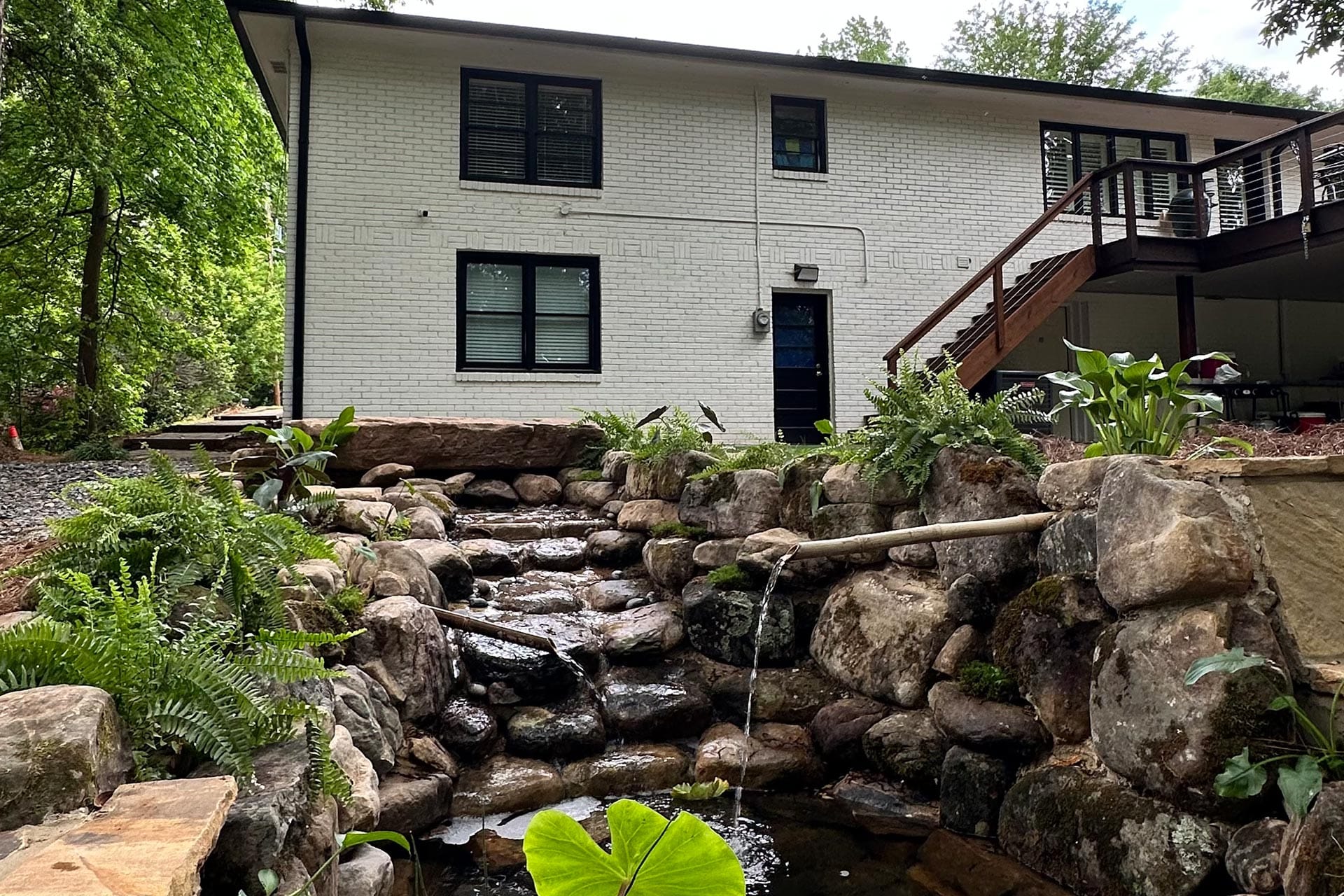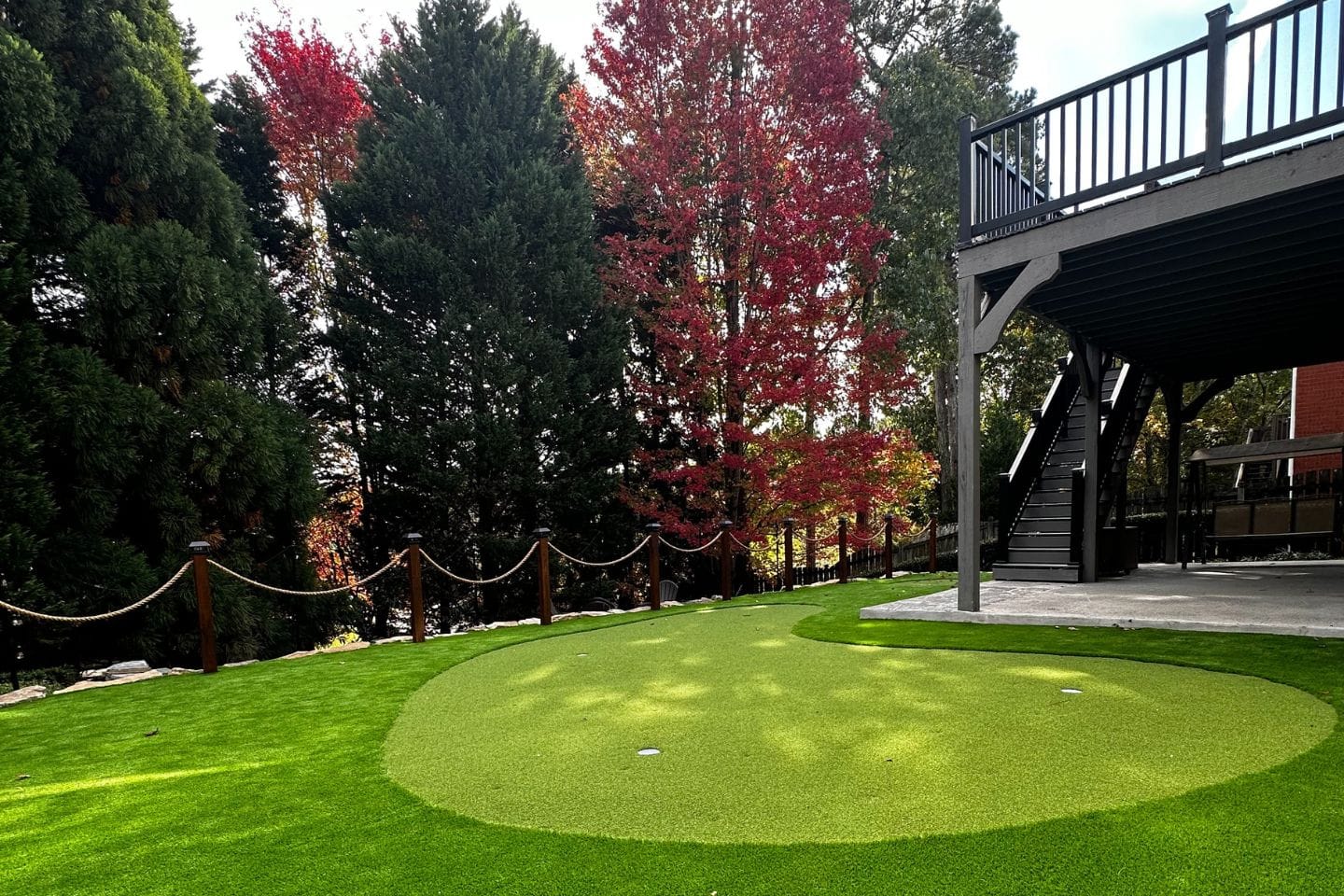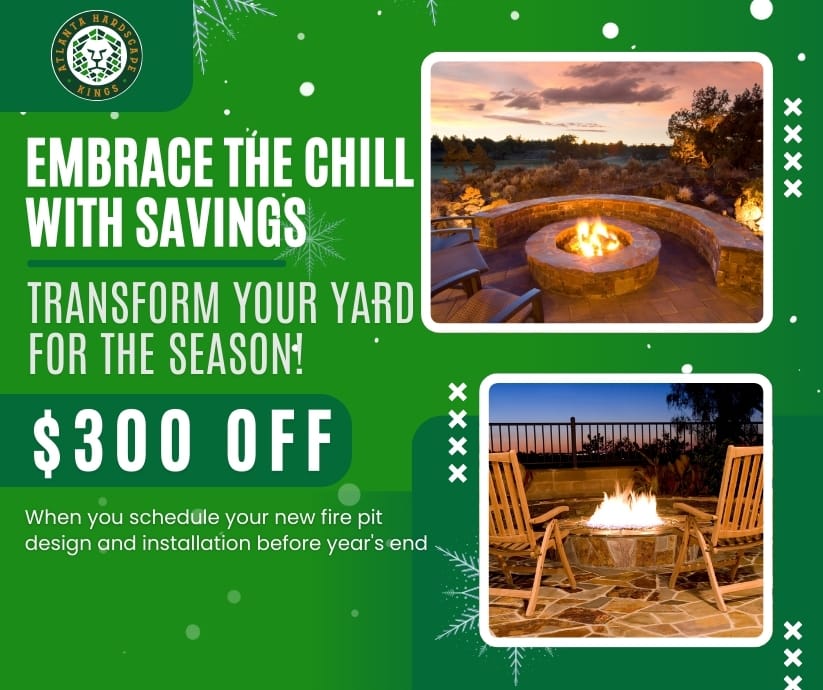Frequently Asked Questions
How much does hardscaping cost?
The cost of hardscaping varies based on factors such as the size of the area, materials used, and complexity of the design. On average, homeowners can expect to spend anywhere from $15 to $50 per square foot.
What is considered a hardscape?
Hardscape refers to the non-plant elements of landscaping, including features such as patios, walkways, retaining walls, driveways, and outdoor living areas. These structures enhance functionality and aesthetics in outdoor spaces.
What are hardscapes in landscaping?
Hardscapes in landscaping refer to the non-plant elements used to create functional outdoor spaces. These include patios, walkways, retaining walls, and outdoor structures, enhancing the overall design, usability, and aesthetic appeal of a landscape.
Is hardscape profitable?
The profitability of hardscaping is significant. By enhancing outdoor spaces with patios, walkways, and retaining walls, property values increase while providing lasting aesthetic appeal and functional use, making it a sound investment for homeowners.
What factors influence hardscaping costs?
The factors that influence hardscaping costs include the materials chosen, the complexity of the design, the size of the area to be hardscaped, labor costs, and any additional features like lighting or drainage systems.
How to estimate hardscaping project expenses?
Estimating hardscaping project expenses involves evaluating material costs, labor fees, and any additional services required. To obtain an accurate estimate, consider factors like project size, design complexity, and local market rates, and consult with professionals for precise quotes.
What materials are used in hardscaping?
The materials used in hardscaping include pavers, natural stone, bricks, concrete, gravel, and timber. These high-quality options create durable, functional, and visually appealing outdoor spaces tailored to your specific design needs.
How to choose hardscape elements for design?
Choosing hardscape elements for design involves considering your space's functionality, aesthetics, and harmony with existing landscapes. Focus on materials, colors, and shapes that complement your home, ensuring a cohesive and inviting outdoor atmosphere.
What maintenance is needed for hardscapes?
Maintenance for hardscapes includes regular cleaning, occasional resealing, and checking for any damage. Additionally, ensuring proper drainage and removing debris will help preserve the integrity and appearance of your outdoor space.
How can hardscapes enhance outdoor spaces?
Hardscapes can significantly enhance outdoor spaces by adding structure and functionality. They create inviting areas for gatherings, improve aesthetic appeal, and increase property value, transforming your yard into a beautiful and usable retreat for relaxation and entertainment.
What are popular hardscape design trends?
Popular hardscape design trends include multi-functional outdoor spaces, eco-friendly materials, and the use of natural stone. Additionally, fire pits and outdoor kitchens are in demand, enhancing social gathering areas while bringing warmth and elegance to backyards.
How does hardscaping affect property value?
Hardscaping significantly influences property value by enhancing curb appeal, increasing usable outdoor space, and improving functionality. Well-designed hardscapes, like patios and walkways, create inviting environments that attract potential buyers, ultimately leading to a higher home value.
What are the environmental impacts of hardscaping?
The environmental impacts of hardscaping include potential disruption of natural drainage patterns, increased runoff, and heat retention. Careful planning and sustainable materials can mitigate these effects while enhancing outdoor aesthetics.
How to plan a hardscaping project?
Planning a hardscaping project involves assessing your outdoor space, defining your goals, establishing a budget, and selecting materials. Work with experienced contractors to design a cohesive layout that enhances your landscape, ensuring the perfect blend of functionality and aesthetic appeal.
What tools are essential for hardscaping?
The essential tools for hardscaping include a shovel, level, trowel, rubber mallet, and landscape fabric cutter. These tools help ensure accurate installment and finish, allowing for durable and aesthetically pleasing outdoor spaces.
How to integrate plants with hardscapes?
Integrating plants with hardscapes enhances the visual appeal of outdoor spaces. Use complementary colors and textures by selecting plants that soften hard surfaces, create balance, and add layers, thereby transforming your yard into a harmonious retreat.
What are common hardscaping mistakes to avoid?
Common hardscaping mistakes to avoid include improper drainage planning, neglecting the integration of soft landscaping, choosing low-quality materials, and overlooking maintenance needs. Careful consideration of these factors ensures a functional, durable, and visually appealing outdoor space.
How long does a hardscaping project take?
The duration of a hardscaping project can vary significantly based on the project's scope, size, and complexity. Generally, small projects may take a few days, while larger installations could require several weeks to complete.
What is the best way to lay pavers?
The best way to lay pavers involves preparing a solid base with compacted gravel, setting an edge restraint, and ensuring proper alignment. Always use a level and apply sand between pavers for stability, then compact the surface for a professional finish.
How to create functionality with hardscapes?
Creating functionality with hardscapes involves designing outdoor spaces that enhance usability and accessibility. Incorporate features like patios, pathways, and seating areas to facilitate movement and encourage gatherings, turning your outdoor area into a practical and inviting retreat.
What are cost-effective hardscaping solutions?
Cost-effective hardscaping solutions include using affordable materials like gravel, concrete pavers, and mulch, as well as optimizing space with versatile features such as portable fire pits and simple patios that enhance outdoor aesthetics and functionality without breaking the bank.
How can hardscaping improve outdoor aesthetics?
Hardscaping significantly enhances outdoor aesthetics by incorporating visually appealing elements like patios, walkways, and retaining walls. These structures add structure, texture, and design to your landscape, creating a balanced and inviting outdoor environment that complements your home.
What are hardscape installation best practices?
Hardscape installation best practices include proper site preparation, ensuring adequate drainage, selecting high-quality materials, and careful alignment and leveling. Additionally, always allow for expansion joints and consider local climate conditions to enhance durability and longevity.
How do different climates affect hardscaping?
Different climates significantly impact hardscaping choices and materials. For instance, extreme heat may require heat-resistant materials, while colder regions necessitate freeze-thaw durable options to prevent damage. Local weather patterns influence design durability and aesthetic longevity.
What is the role of drainage in hardscaping?
The role of drainage in hardscaping is crucial for preventing water accumulation, which can damage structures and landscapes. Proper drainage ensures that excess water is directed away, preserving the integrity and aesthetics of your outdoor space.
How to assess a hardscape’s durability?
Assessing a hardscape's durability involves evaluating the quality of materials used, checking for proper installation techniques, and considering environmental factors such as weather exposure. Regular maintenance can also indicate how well the hardscape withstands wear over time.
What styles of hardscaping are most popular?
The most popular styles of hardscaping include modern minimalist designs, rustic stone patios, classic brick walkways, and vibrant outdoor living areas that incorporate fire pits and seating walls. Each style enhances outdoor spaces uniquely while catering to diverse tastes.
How does hardscaping complement landscaping features?
Hardscaping complements landscaping features by providing structure and functionality to outdoor spaces. It integrates elements like patios, walkways, and retaining walls, enhancing the overall design while creating defined areas for relaxation and entertainment among the greenery.
What regulations should be considered in hardscaping?
Regulations to consider in hardscaping include local zoning laws, building permits, and codes related to drainage and safety. Always check with your city or county regarding restrictions and requirements for materials and installations to ensure compliance.
How can hardscaping reduce water usage?
Hardscaping can significantly reduce water usage by incorporating non-permeable surfaces such as patios, walkways, and retaining walls, which minimize the need for irrigation. This strategic design prevents excess water runoff and promotes efficient water management in your landscape.
